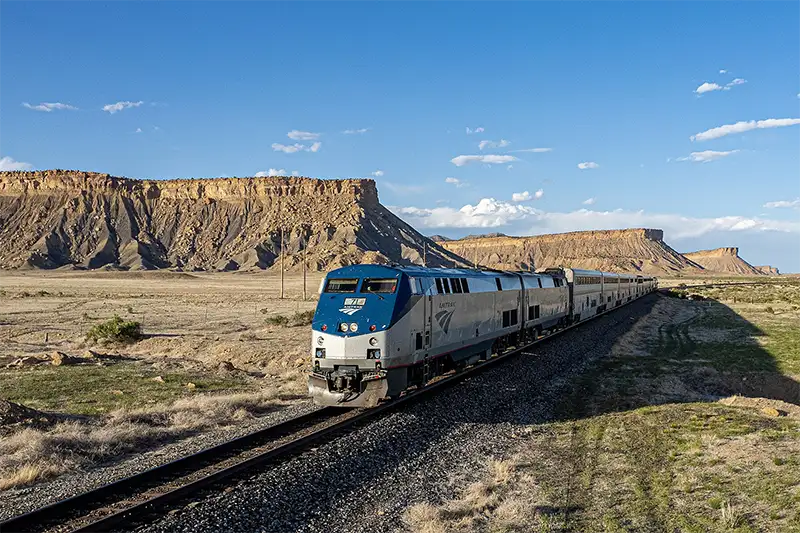National Park Entrance Reservations Required for 2025

Because of increased visitation to many popular US National Parks, advance entrance reservations are now required during peak visitation periods. These reservations must be purchased in advance at www.recreation.gov, or by using the mobile app (https://www.recreation.gov/mobile-app) or calling (877) 444-6777. They will not be available for purchase at the parks; and visitors who arrive without national park entrance reservations will be turned away. It’s a good idea to print or save a digital copy of your reservation on your phone, as cell service is not available at many national park entrance stations. A photo ID is also required, and it must match the name on the reservation.
Entrance reservations are not required if you have lodging, camping or tour reservations; however you must show confirmation of those reservations at the park entrance. Entrance reservations are required even if you have a national park pass. And if you don’t have a national park pass, you will still need to pay the entrance fee even if you have an entrance reservation. Questions about the entrance reservations can be directed to the specific national park you intend to visit.
Here’s what you need to know about the 2025 national park entrance reservations.
Mount Rainier National Park
Timed entry reservations are required for visits to the Sunrise Corridor of Mount Rainier National Park, between July 11, 2025 and September 1, 2025 from 7 AM to 5 PM. Reservations will also be required on weekends and holidays from September 2 until the end of the season, (usually mid-October), from 7 AM to 5 PM. Timed entry reservations are good for one day, and they are required in addition to any park passes or entry fees. Reservations are valid for a 2-hour arrival window. You may not enter the area prior to or after your reservation time slot. Once entered, you may stay the entire day and re-enter.
The Sunrise Corridor is located in the northeast corner of the park. It can be accessed by the White River Entrance, which is located on State Route 410. It connects Enumclaw in the north to Yakima in the east. Timed entry reservations for this area of the park are available beginning on May 16, 2025 at the following times listed below.
| Booking Window Opens | Arrival Dates |
| May 16, 2025 | July 11 to July 31, 2025 |
| June 6, 2025 | August 1 to September 1, 2025 |
For weekends and holidays after September 2, 2025, reservations will be available seven days in advance. It’s also important to note that road construction in September 2025 may cause delays and closures on Highway 123 (https://www.nps.gov/mora/planyourvisit/park-construction.htm).
Reservations cost $2. A limited number of timed entry reservations will also be available at 7:00 PM Pacific Time the day prior to the visit. Reservations are only available at www.recreation.gov. They are not available at park entrances. It’s best to print a copy of your reservation, as cell service may not be available at the park entrances.
The Paradise Corridor timed entry program will be paused in 2025, due to construction along that route.
Yosemite National Park
National park entrance reservations are required for peak season in Yosemite National Park in 2025. They are required for visits on the following dates:
- May 24, 2025 to May 26, 2025 (Memorial Day Weekend)
- June 15, 2025 to August 15, 2025
- August 30, 2025 to September 1, 2025 (Labor Day Weekend)
These reservations are required for visitors who enter the park between 6 AM and 2 PM. Reservations cost $2 each. They are available at www.recreation.gov, beginning on May 6, 2025 at 8 AM. Additional reservations will be released seven days before the arrival date. These reservations are limited, so plan ahead to avoid disappointment. If you don’t have computer access you can call (877) 444-6777 to make a reservation.
Each reservation is valid for a three-day period, so if you plan to visit the park for more than three days, you will need multiple reservations. Each user is limited to two three-day reservations. Unlike past years, in 2025 you do not need to use the reservation on the first day in order for it to be valid for the whole three days. If you don’t use the reservation until the last day, it’s still valid.
Reservations are also required for everyone who passes through the park, even if you don’t stop in the park.
Visitors who have lodging reservations in the park, or private lodging reservations in Wawona, Yosemite West or Foresta do not need reservations. Visitors who arrive on YARTS or with an authorized tour group do not require reservations. Visitors with a wilderness permit or a Half Dome permit do not need reservations.
Entrance reservations are not required at the Hetch Hetchy Entrance, which is open from sunrise to sunset.
Reservations cannot be sold or given away. The person who made the reservation must be in the vehicle in order to gain entrance. A valid photo ID will be required.
Visitors who have reservations will also have to pay the park entrance fee or have a valid national park pass. A national park pass by itself does not replace the entrance reservation requirement. All visitors will need reservations during the required times.
The number of peak-hours reservations is determined by the number of parking spaces in Yosemite Valley coupled with roadway capacity in the Valley; and correlated with entrance station data from previous years to estimate number of vehicles going to other areas of the park. This is a pilot program and will be adjusted next year.
Yosemite entrance reservations are also required during peak viewing times for Horsetail Falls in February. Those entrance reservations are usually released in early December. (www.emerginghorizons.com/yosemite-firefall-coming-in-february)
For more information about Yosemite entrance reservations, visit www.recreation.gov.
Arches National Park
After reviewing the 2024 Arches Timed Entry Reservation Program, some modifications have been made. A Timed Entry Reservation will be required for visitors who enter the park from April 1 to July 6, 2025 and from August 28 to October 31, 2025. Reservations are required between 7 AM and 4 PM during these periods. Reservations will be released in blocks beginning at 8 AM MST on January 2, 2025. They cost $2 each. The reservation blocks are listed below.
- April 1-June 30 reservations open January 2 at 8 AM MST
- July 1-6 reservations open on February 1 at 8 AM MST
- August 28-31 reservations open on March 1 at 8 AM MST
- September 1-30 reservations open on April 1 at 8 AM MST
- October 1-31 reservations open on May 1 at 8 AM MST
Beginning on March 31, 2025, a limited number of next-day tickets will be available after 7 PM MDT on the day prior to the visit.
Reservations can be made in hourly increments and are only valid for entrance during that hour. Visitors who want to visit the park on two different days will need two different timed entry reservations. Once visitors enter the park, they can stay for the entire day. Ticket holders may also exit and re-enter the park on the same day with a correctly validated ticket.
Glacier National Park
As in previous years, advance vehicle reservations are required for the most congested areas in Glacier National Park. The 2025 system requires vehicle entrance reservations for visitors traveling over the west side of Going-to-the-Sun Road between June 13 and September 28, 2025. These reservations will be required for visits between 7 AM and 3 PM.
Vehicle entrance reservations cost $2. A portion of the vehicle entrance reservations for the West Entrance and the North Fork entrance will be available 120 days in advance beginning February 12, 2025 at 8 AM Mountain Standard Time. Beginning on June 12, 2025 the remaining vehicle entrance reservations will be released at 7 PM, the day prior to the visit.
As in 2024, vehicle reservations will not be required to enter Two Medicine Valley or the St. Mary entrance to Going-to-the-Sun Road in 2025. Entry may however be restricted (metered) during peak times if the roads become too congested. This usually occurs between 10 AM and 2 PM. Visitors with lodging or tour reservations will be admitted during these restricted times.
The Swiftcurrent area of Many Glacier Valley will be closed to the public in 2025, due to construction projects.
It’s important to note that although visitors with lodging or tour reservations do not need vehicle entrance reservations to enter the park, the lodging or tour reservation must be made for the specific area of the park you plan to visit. For example if you have a reservation in the Apgar Campground, you will be allowed to access that campground; however you will not be allowed to access Going-to-the-Sun Road without a vehicle entrance reservation.
Rocky Mountain National Park
Visitors to Rocky Mountain National Park are required to have a timed entry permit to enter the park beginning May 23, 2025. There are two Rocky Mountain Entry Permits.
The Timed Entry Permit will allow access to all areas of the park, except the Bear Lake Corridor. It will be valid from 9 AM to 2 PM. It is required until October 13, 20254. All permits will be timed, and will require the permit holder to enter the park within a 2 hour window.
The Timed Entry+ Bear Lake Road Permit will allow entry to the Bear Lake Corridor, as well as the rest of the park. It will be valid from 5 AM to 6 PM. It is required until October 19, 2025.
Reservations for the majority of the permits will be released on 8 AM Mountain Time on the following dates.
- May 1, 2025 for permits from May 26 to June 30
- June 1, 2025 for permits for the month of July
- July 1, 2025 for permits for the month of August
- August 1, 2025 for permits for the month of September
- September 1, 2025 for permits for the month of October
The remaining entry permits will be available for purchase at 7 p.m. the day before the planned visit. Entry reservations cost $2, and if you plan to visit the park more than one day you will need an entry permit for each day.
Carlsbad Caverns
Last but not least on the list of national park entrance reservations is Carlsbad Caverns. Although technically you don’t need a reservation to get in to the park, you do need one if you actually want to see the famous caverns.
Every person — even children — needs a timed ticket to enter the caves. Tickets are good for entrance within the hour specified on the ticket. Late comers will not be admitted, so give yourself plenty of time to travel to the caverns and park.
These tickets are priced at $1 each, and like the park entrance reservations they are only available at www.recreation.gov. And again, make sure you print out your tickets or save a screen shot of them, as cell service is spotty in the park.
Plan ahead to avoid disappointment, and get your national park entrance reservations as soon as you make your travel plans.


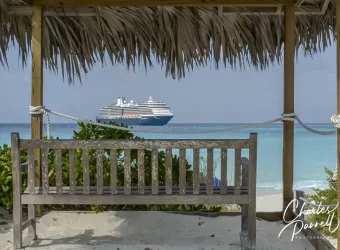

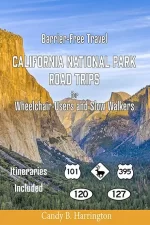
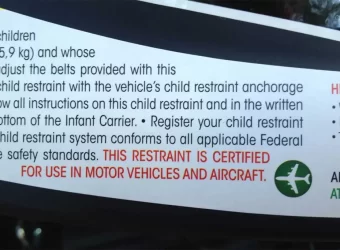
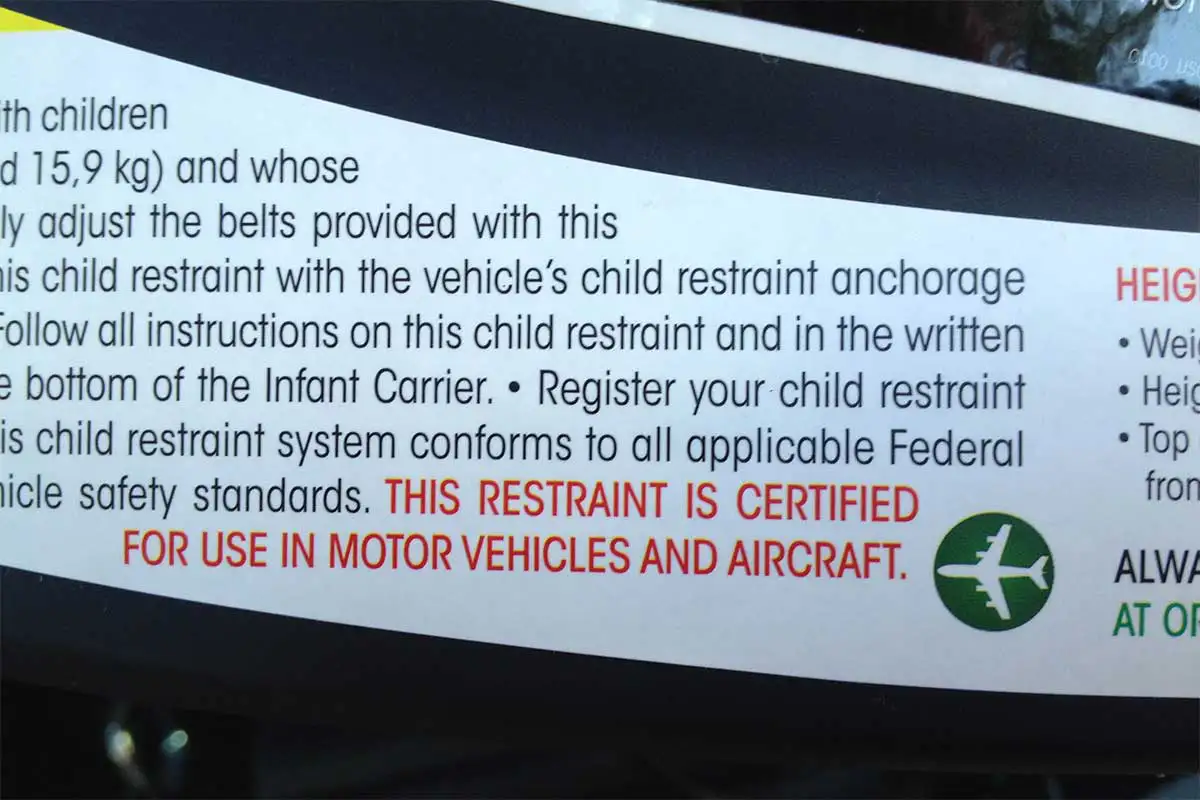


 Have you ever arrived at a hotel, reservation in hand, only to discover that the hotel gave away your accessible room? Or worse yet, been told by a reservation agent that they cannot reserve a specific accessible room for you? It’s not only frustrating, but it’s also illegal in the US under the Americans with Disabilities Act (ADA). But unfortunately it does happen. With that in mind, here’s what you need to know about the law, so you can be a more effective-self advocate.
Have you ever arrived at a hotel, reservation in hand, only to discover that the hotel gave away your accessible room? Or worse yet, been told by a reservation agent that they cannot reserve a specific accessible room for you? It’s not only frustrating, but it’s also illegal in the US under the Americans with Disabilities Act (ADA). But unfortunately it does happen. With that in mind, here’s what you need to know about the law, so you can be a more effective-self advocate.

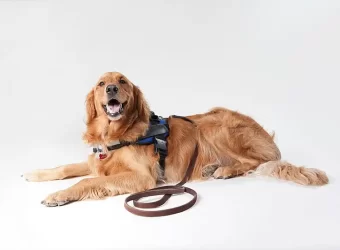
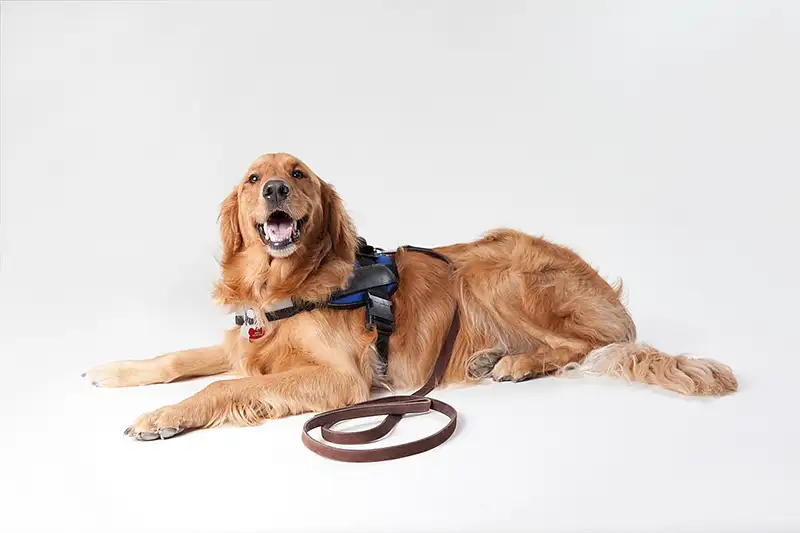 Under the Air Carrier Access Act (ACAA), US airlines are required to accept service animals on all their flights. Additionally, foreign air carriers are required to accept service animals on all flights to and from the US. Psychiatric service animals are treated the same as service animals under the ACAA. Additionally, after the ACAA update in 2021, airlines are no longer required to accommodate emotional support animals. They are now treated as pets and are subject to pet rules and additional charges. So here’s what you need to know about flying with a service animal.
Under the Air Carrier Access Act (ACAA), US airlines are required to accept service animals on all their flights. Additionally, foreign air carriers are required to accept service animals on all flights to and from the US. Psychiatric service animals are treated the same as service animals under the ACAA. Additionally, after the ACAA update in 2021, airlines are no longer required to accommodate emotional support animals. They are now treated as pets and are subject to pet rules and additional charges. So here’s what you need to know about flying with a service animal.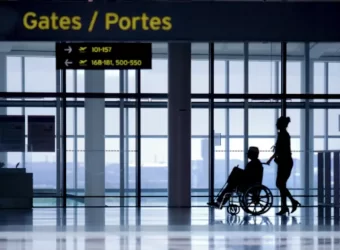
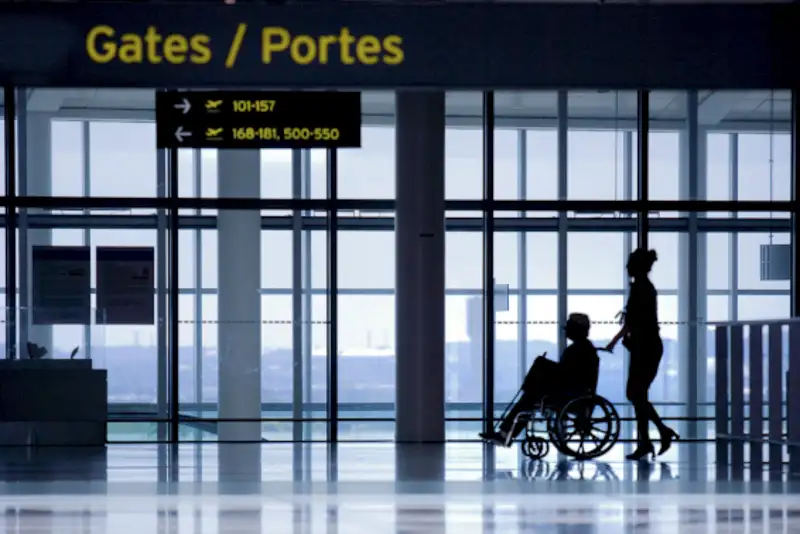 Travel by its very nature requires a good amount of preparation, especially when it includes air travel. Factor a disability into that equation and the complexity increases. With that in mind, here are some helpful tips for flying with a wheelchair.
Travel by its very nature requires a good amount of preparation, especially when it includes air travel. Factor a disability into that equation and the complexity increases. With that in mind, here are some helpful tips for flying with a wheelchair.
 Nearly a year ago, on July 26, 2023, the Department of Transportation (DOT) announced a new accessible airline lavatory rule. Unfortunately it will still be many years before single aisle aircraft with more than 125 seat have accessible lavatories, but at least it’s a start. The rulemaking process has been going on for quite some time and the DOT took into consideration comments from consumers, airlines and disability organizations.
Nearly a year ago, on July 26, 2023, the Department of Transportation (DOT) announced a new accessible airline lavatory rule. Unfortunately it will still be many years before single aisle aircraft with more than 125 seat have accessible lavatories, but at least it’s a start. The rulemaking process has been going on for quite some time and the DOT took into consideration comments from consumers, airlines and disability organizations.


